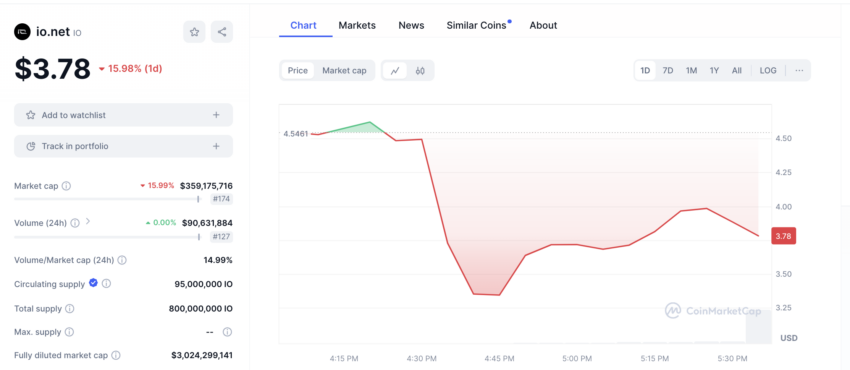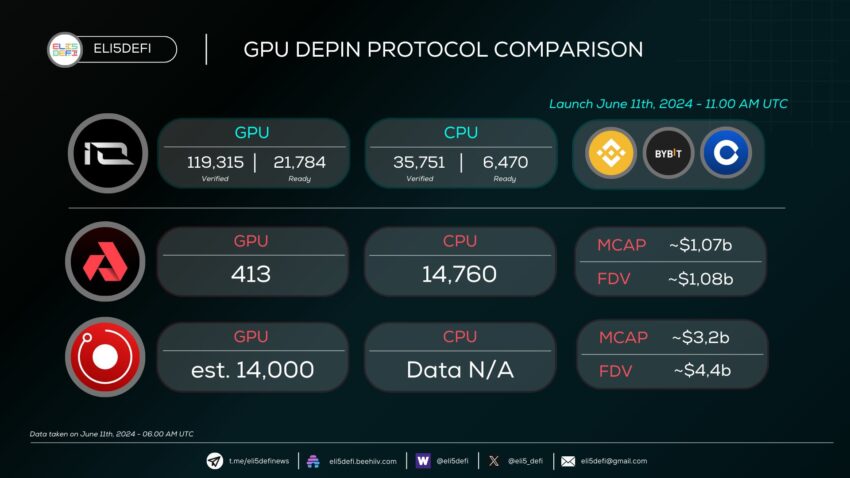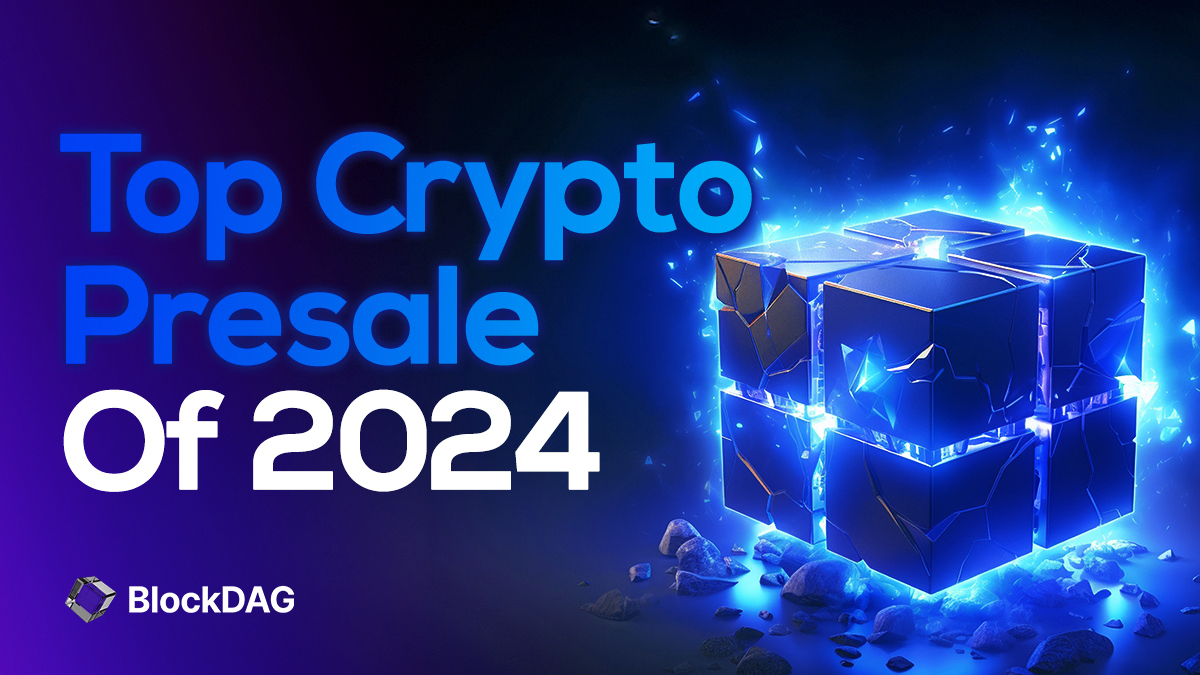ARTICLE AD BOX
Binance has listed the IO token from the Decentralized Physical Infrastructure Network (DePin) project io.net. Trading of the IO token commenced on June 11 at 12:00 UTC.
Notably, the claim for the token opened an hour earlier at 11:00 UTC.
Crypto Analysts Speculate on the Valuation of IO Tokens
This listing marks a pivotal moment for io.net, as the token currently trades at $3.78. It boasts a fully diluted valuation (FDV) of approximately $3 billion. The FDV is a product of the token’s current price and its maximum supply.
The IO token is the main currency within the io.net ecosystem and is used for services, transactions, and fees. Additionally, it is used to reward contributors for providing their Graphics Processing Unit (GPU) power, incentivizing participation, and supporting network growth.
Read more: Tokenomics Explained: The Economics of Cryptocurrency Tokens
 IO Token Price Performance. Source: CoinMarketCap
IO Token Price Performance. Source: CoinMarketCapCrypto investor Axel Bitblaze highlighted the potential of the IO token, comparing it with similar projects.
“Compared with similar projects like Render (RNDR), the FDV for io.net could range from $2.5 billion to $4 billion,” Axel Bitblaze said.
Echoing Bitblaze’s optimism, DeFi analyst Jake Pahor commented on the potential pricing based on Render’s valuation.
“With 800 million IO tokens in total, a launch at Render’s FDV of $4.6 billion sets the price at $5.75 per token,” Pahor stated.
The comparison extends beyond valuations to the underlying technological infrastructure. The io.net project stands out for its substantial GPU capabilities, which are crucial for the network’s operation.
Web3 Researcher Elip5DeFi shared a visual indicating that io.net possesses 21,784 GPUs, outstripping competitors like Render and Akash Network (AKT), which boast 14,000 and 413 GPUs, respectively.
This superior GPU count suggests that io.net could achieve, if not surpass, Render’s FDV. Hence, the IO tokens still have some room for growth after the token listing.
“I won’t make any predictions, but the numbers speak for themselves,” Elip5DeFi said.
 GPU DePin Protocol Comparison. Source: Elip5DeFi
GPU DePin Protocol Comparison. Source: Elip5DeFi Axel Bitblaze also emphasized the intersection of decentralized artificial intelligence and DePin technologies within io.net, dubbing it the “Internet of Graphics Processing Unit (GPU).” He also outlined the significant cost issues associated with high-end GPUs necessary for training complex AI models.
“To train AI models, you need a ton of computing power, processing all the feed data and training it into desirable output. This requires GPUs. High-end GPUs don’t come cheap. They’re seriously pricey, and self-funded startups can’t even afford it,” Axel Bitblaze explained.
Addressing these challenges, io.net has innovated a decentralized computing network offering significant computing power at a fraction of traditional costs, akin to an “Airbnb of GPUs.” This setup allows individuals and companies to rent out idle GPU power, providing a mutually beneficial solution for both hardware owners and AI companies.
Read more: Top 9 Web3 Projects That Are Revolutionizing the Industry
Furthermore, io.net enhances the AI infrastructure by creating clusters of GPUs that offer flexibility and rapid deployment capabilities. This approach makes the system more resilient and reduces costs.
The post Binance Lists DePin Project Io.Net: Everything You Need to Know appeared first on BeInCrypto.
.png)
 5 months ago
1
5 months ago
1








 English (US)
English (US)